Did you know that a staggering 85% of cats over three years old face dental issues? This statistic is even more alarming for our sleek and sophisticated Oriental Shorthairs. Are you giving enough attention to your furball’s pearly whites?
Dental diseases, such as periodontal disease, can quickly escalate as cats age. With the typical culprits being dental plaque and tartar, it’s no wonder that conditions like gingivitis and periodontitis surface. Addressing these problems promptly is essential to keep your Oriental Shorthair feline’s mouth in top shape and breeze through every purr and bite!
Key Takeaways
- 85% of cats over three experience dental issues. Oriental Shorthairs are no exception.
- Periodontal disease worsens with age, leading to severe dental complications.
- Dental plaque and tartar are common causes of gingivitis and periodontitis.
- Prompt action is crucial to maintain your cat’s dental health.
- Managing oral health in Oriental Shorthair Cats is crucial for their well-being.
Understanding Common Dental Issues in Oriental Shorthair Cats
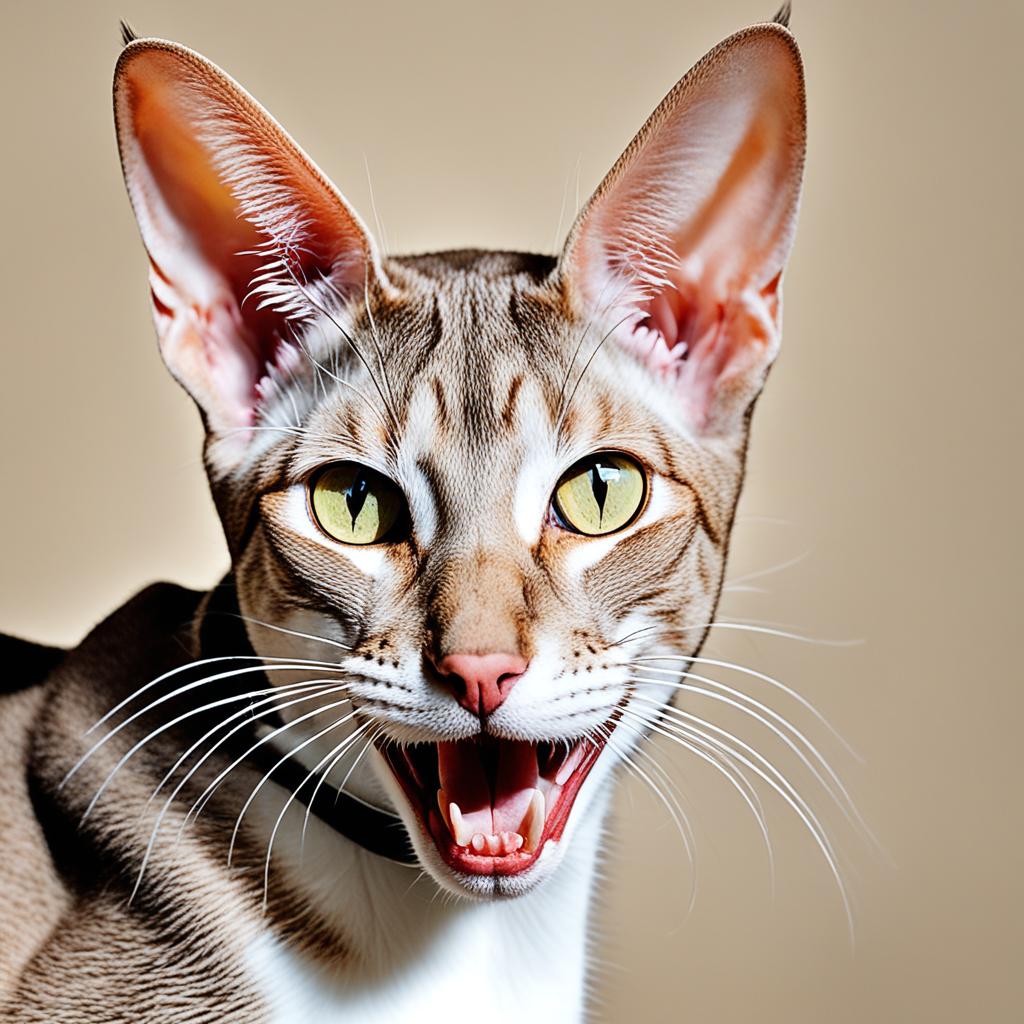
Keeping up with your Oriental Shorthair’s dental health can be a bit like navigating a feline maze. Dental issues in Oriental Shorthair Cats range from mild inconveniences to serious health problems. Let’s dive paws-first into some common dental issues to keep an eye on.
Gingivitis: Inflammation of the Gums
Gingivitis is that pesky inflammation of the gums that can lead to more severe conditions if left untreated. If you notice your cat’s gums looking redder than Rudolph’s nose, it’s time to take action. Regular brushing and dental checkups are crucial tips for Oriental Shorthair Cat dental health.
Periodontitis: Advanced Stage of Gum Disease
When gingivitis escalates, it can transform into periodontitis, a royal pain in the gums. This advanced stage of gum disease affects not just the gums but the bones and tissues supporting the teeth. Regular dental cleanings and early intervention are essential for managing such dental issues in Oriental Shorthair Cats.
Feline Odontoclastic Resorptive Lesions (FORL)
FORL sounds like a villain from a cat comic, but it’s a real dental disorder that causes cavity-like lesions and tooth resorption. These lesions are immensely painful and require prompt veterinary attention. Early detection and treatment are key tips for Oriental Shorthair Cat dental health to manage this condition efficiently.
Don’t let these dental villains rule your kitty’s life; start those preventative measures today!
Causes of Dental Problems in Oriental Shorthair Cats
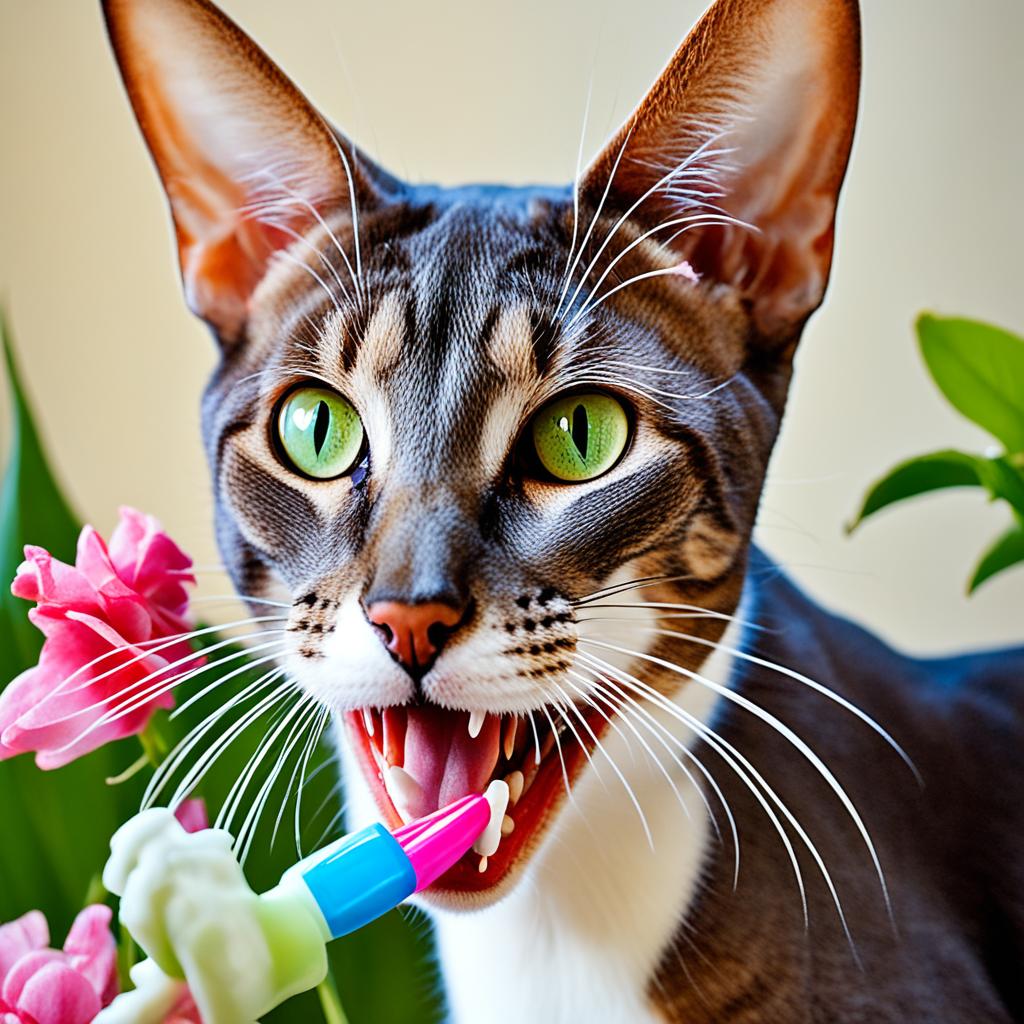
Understanding the root causes of dental problems in your Oriental Shorthair Cat is key to their prevention and treatment. Awareness and proactive measures can effectively mitigate these issues.
Poor Dental Hygiene
One major cause of dental issues in Oriental Shorthair Cats is poor dental hygiene. Neglecting regular brushing leads to the accumulation of plaque and tartar, which can result in gingivitis and periodontal disease. Ensuring consistent dental care at home is crucial for preventing dental problems in Oriental Shorthair Cats.
Diet and Nutrition
Diet plays a significant role in your cat’s oral health. Feeding your Oriental Shorthair a diet high in soft or sugary foods can exacerbate dental problems. Opting for a balanced diet that incorporates dental care products can make a difference in managing Oriental Shorthair Cat dental issues.
Genetic Predispositions
Genetics also play a part in your cat’s dental health. Oriental Shorthair Cats might have a genetic predisposition to certain dental problems. By understanding these hereditary risks, you can take specific measures and work closely with your veterinarian to prevent dental problems in Oriental Shorthair Cats.
How to Deal with Oriental Shorthair Cat’s Dental Problems?
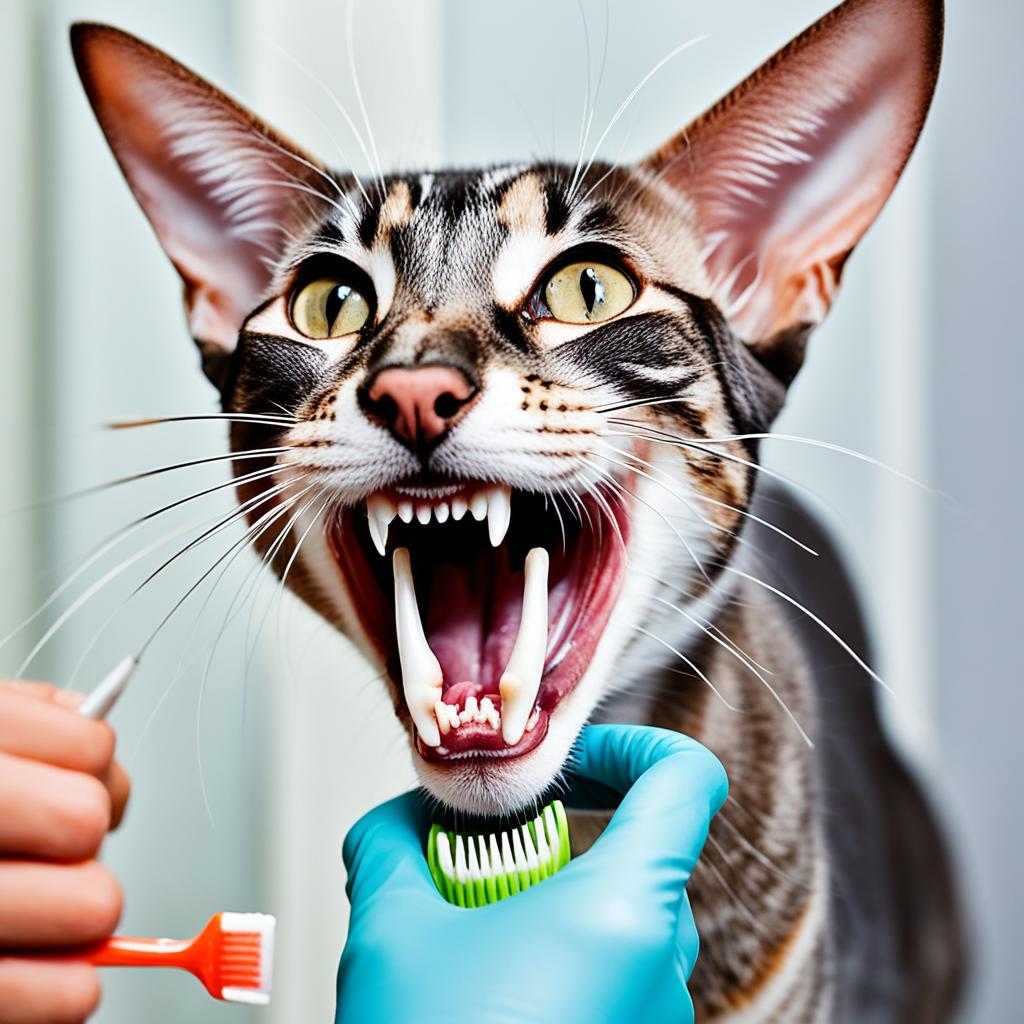
Addressing dental hygiene for Oriental Shorthair Cats is crucial to prevent severe dental problems. Recognizing common symptoms and maintaining regular vet visits are essential parts of the management process.
Identifying Signs of Dental Issues
Is your Oriental Shorthair displaying unusual behavior? Bad breath, difficulty eating, or frequent pawing at the mouth can be red flags. Spotting these early signs helps in tackling dental issues before they escalate. Bad breath, scientifically known as halitosis, may indicate underlying problems such as gingivitis or even periodontitis.
Regular Vet Visits and Dental Checkups
Routine vet visits are not just for vaccinations and general health check-ups but are pivotal for dental health too. Vets can identify early signs of dental decay or gum disease. Regular professional cleanings help in maintaining dental hygiene for Oriental Shorthair Cats effectively. Ensuring that your vet is equipped to handle feline dental care can make a world of difference.
By keeping an eye on symptoms and scheduling consistent vet appointments, you’re not just managing but proactively learning how to deal with Oriental Shorthair Cat’s dental problems.
Tips for Ensuring Good Dental Hygiene for Your Oriental Shorthair
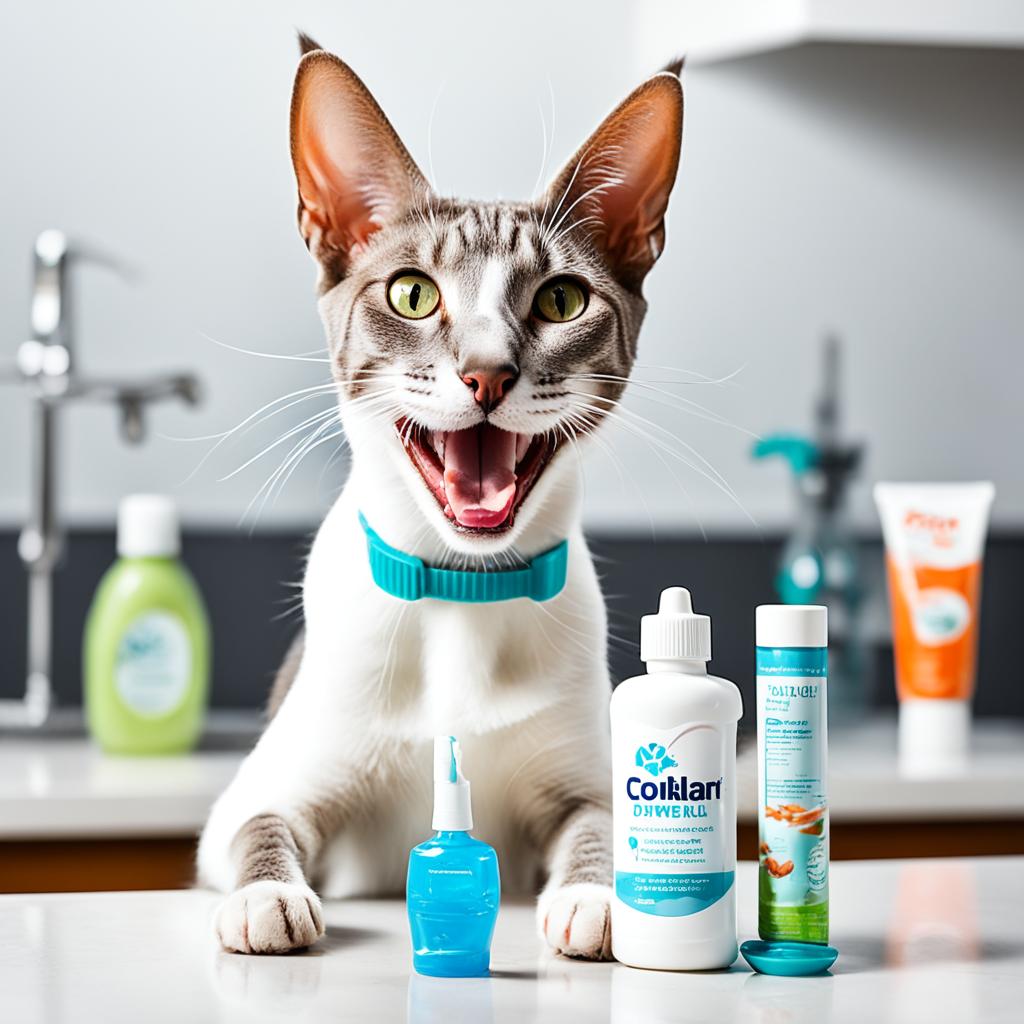
Establishing a daily dental care routine for your Oriental Shorthair isn’t just beneficial; it’s essential. A *properly maintained* mouth can lead to fewer vet visits and a happier cat. Let’s get into some specifics to ensure your furry friend’s pearly whites stay in tip-top shape.
Daily Brushing Techniques
Brushing your cat’s teeth daily might sound daunting, but it’s a game-changer for maintaining dental hygiene for Oriental Shorthair Cats. Begin by letting your cat get used to the taste of cat-safe toothpaste. Then, gradually introduce a cat toothbrush or finger brush. Always use gentle, circular motions. Here are some tips for effective brushing:
- Start slow; let your cat sniff and taste the toothpaste first.
- Use gentle, circular strokes focusing on the gum line where plaque tends to gather.
- Regularly praise and reward your cat to make the experience positive.
Using Cat-Safe Dental Products
Investing in quality dental products that are specifically designed for cats will go a long way in promoting dental hygiene for Oriental Shorthair Cats. Look for toothbrushes with soft bristles and toothpastes that are enzymatic and pet-safe. Here’s a quick comparison of some top products:
| Product | Key Features | Benefits |
|---|---|---|
| PlaqClnz Oral Spray | Easy application, fights bacteria | Reduces plaque, freshens breath |
| Virbac C.E.T. Enzymatic Toothpaste | Enzymatic formula, cat-friendly flavors | Controls plaque, enhances cat’s acceptance |
| Pet Republique Cat Toothbrush | Dual-ended, soft bristles | Effective cleaning, comfortable for cats |
Using the right tools makes all the difference, aligning perfectly with our tips for Oriental Shorthair Cat dental health.
The Role of Diet in Maintaining Dental Health
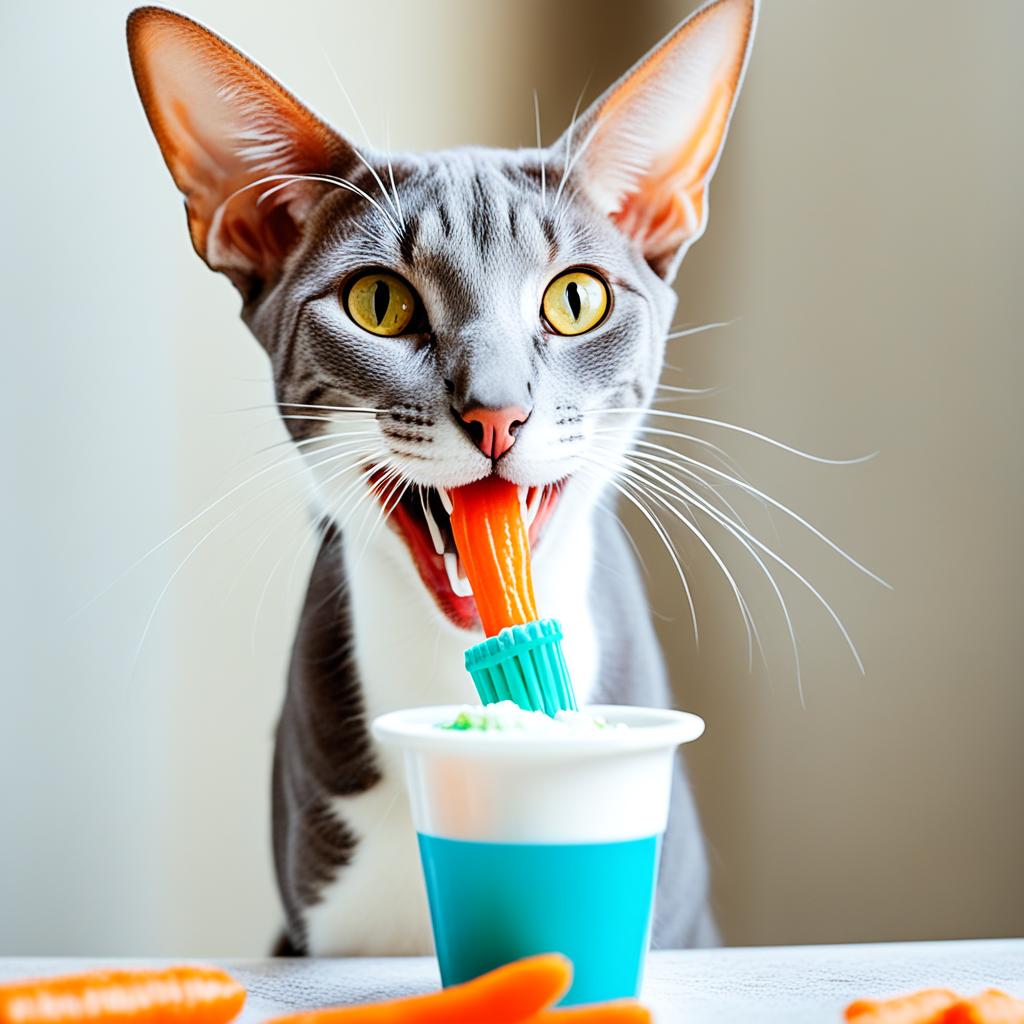
When it comes to Oriental Shorthair Cat dental care, diet is a significant player in the game. Choosing the right food can help in preventing dental problems in Oriental Shorthair Cats, making it crucial to understand how different types of food impact their teeth.
Dry Food vs. Wet Food
Ah, the age-old debate—dry food versus wet food! Dry food has a slight edge in dental care. The abrasive texture can help scrub away plaque, which is fantastic for preventing dental problems in Oriental Shorthair Cats. However, don’t dismiss wet food entirely. Wet food provides essential hydration and nutrients, which also contribute to overall dental and general health.
Special Dental Diets
Here’s where things get even more interesting. Some pet food brands offer special dental diets formulated to target plaque and tartar buildup directly. These diets can be a game-changer for Oriental Shorthair Cat dental care, especially for felines prone to dental issues. Always look for products that have been scientifically tested and approved by veterinarians—it’s worth every penny!
Professional Dental Cleanings: What to Expect
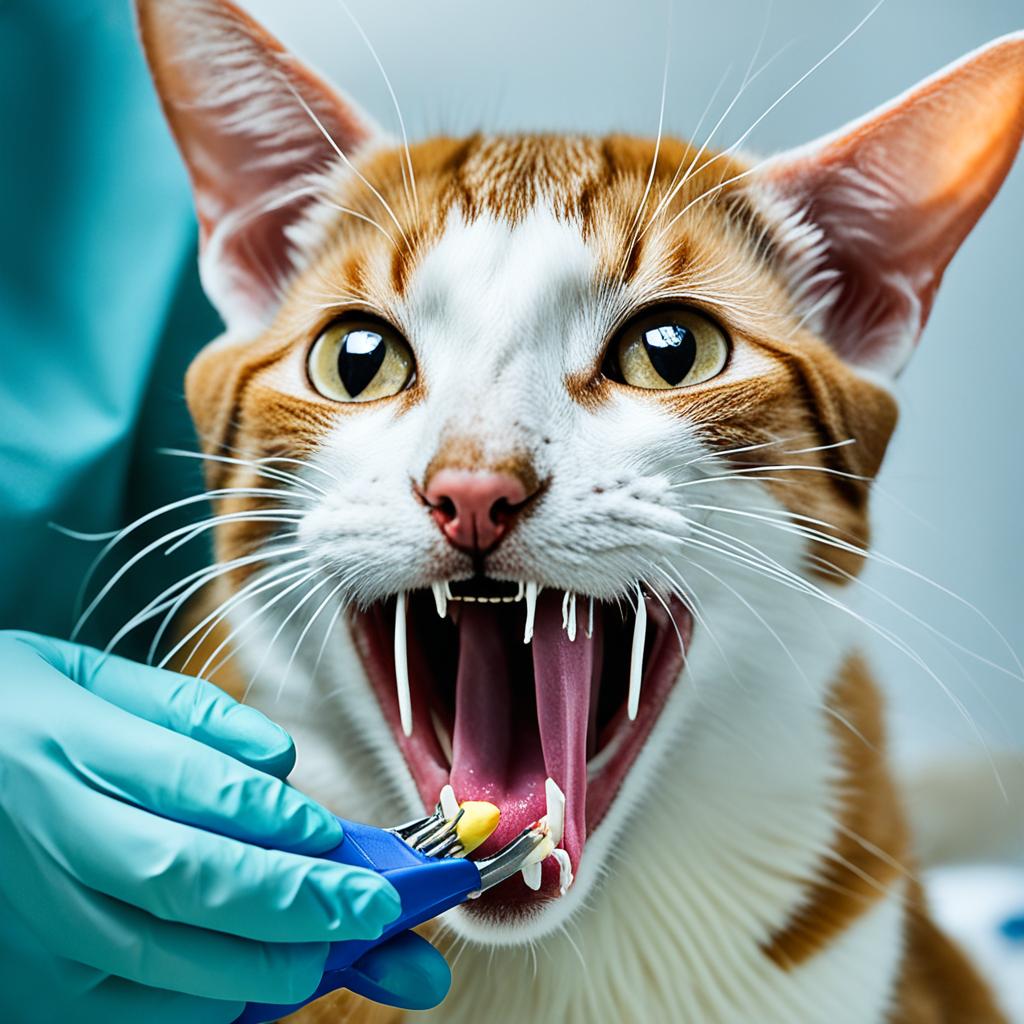
When it comes to maintaining impeccable dental hygiene for Oriental Shorthair Cats, professional cleanings are indispensable. Professional dental cleanings aim to eliminate plaque and tartar accumulation, which, if left unattended, can lead to severe dental issues. Keen to know what the procedure entails? Here’s a breakdown:
Once you take your feline friend for Oriental Shorthair Cat teeth cleaning, expect the following process:
- Anesthesia: Your cat will be anesthetized — this is essential for stress-free and thorough cleaning.
- Scaling and Polishing: The vet utilizes specialized tools for scaling to remove stubborn plaque and tartar, followed by polishing to smoothen the tooth surface, hindering plaque buildup.
- Examination: A comprehensive examination of the oral cavity is performed to detect any hidden dental issues.
Regular professional cleanings not only optimize dental hygiene for Oriental Shorthair Cats but also allow for early detection of potential problems. This proactive approach helps ensure that your beloved pet maintains a healthy and pain-free mouth.
| Procedure | Purpose | Benefit |
|---|---|---|
| Anesthesia | Reduce stress and allow thorough cleaning | Comfortable experience for your cat |
| Scaling | Remove plaque and tartar | Prevent periodontal disease |
| Polishing | Smoothen tooth surfaces | Reduce future plaque buildup |
| Examination | Identify hidden dental issues | Early intervention and treatment |
Investing in professional cleanings is a fundamental part of ensuring excellent Oriental Shorthair Cat teeth cleaning and sustaining overall dental health for your furry companion.
Signs Your Oriental Shorthair Needs Immediate Dental Care
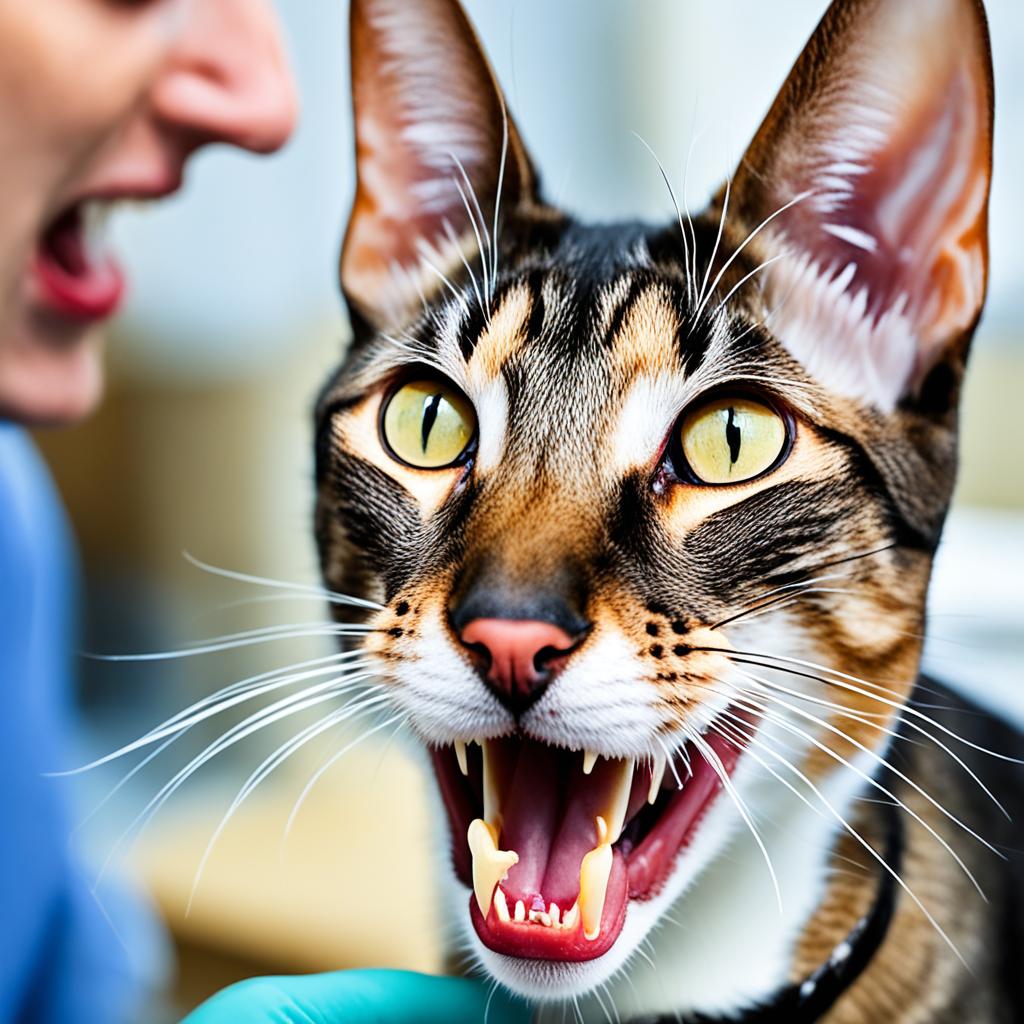
Understanding the signs of dental issues in your Oriental Shorthair can make the difference between timely treatment and experiencing more severe complications. By keeping an eye out for specific symptoms, you can ensure that your furry friend receives prompt and appropriate Oriental Shorthair dental care.
Bad Breath and Drooling
Is your cat’s breath smellier than usual? Persistent bad breath (halitosis) can be a red flag for deeper dental concerns. Alongside this, excessive drooling is another indication that something is amiss. When focusing on Oriental Shorthair dental care, these are the primary signs that demand your attention.
Pawing at the Mouth
Cats are not exactly known for their expressive nature, but when they repeatedly paw at their mouth, it’s a cry for help. This behavior can signal pain or discomfort due to dental issues, including periodontal disease or other oral infections. Spotting these signs swiftly can prevent further distress to your beloved Oriental Shorthair.
Difficulty Eating and Weight Loss
Perhaps the most concerning signs of dental issues in cats are difficulties in eating and noticeable weight loss. If your cat is reluctant to eat or seems to be dropping food often, it is essential to seek immediate veterinary care. Weight loss can be an alarming indicator of serious dental problems that require urgent attention.
By being vigilant and responsive to these signs of dental issues in cats, you can ensure that your Oriental Shorthair receives the highest level of care and maintains overall health and well-being.
Preventing Dental Disease in Oriental Shorthair Cats

Ensuring your Oriental Shorthair stays in top oral health requires an ongoing commitment to both routine home care and early detection strategies. Neglecting these aspects can lead to severe dental problems, but with the right actions, you can keep those feline pearly whites in tip-top shape.
Routine Home Care
Routine home care forms the backbone of managing oral health in Oriental Shorthair Cats. Daily brushing using cat-specific toothpaste and brushes helps prevent plaque buildup. In addition to brushing, using dental wipes and oral gels can provide extra layers of protection, tackling bacteria that lead to gum disease.
Early Detection Strategies
Early detection is vital for preventing dental problems in Oriental Shorthair Cats. Regularly inspect your cat’s mouth for signs of trouble, such as inflamed gums or loose teeth. Paying attention to changes in eating habits or bad breath can also alert you to potential dental issues. Combine these efforts with biannual veterinary exams to catch any problems before they escalate.
Incorporating these strategies into your daily routine can make a big difference in your Oriental Shorthair’s dental health. Keep your furry friend’s smile bright with consistent care and vigilant monitoring.
Products to Help Maintain Your Cat’s Dental Health
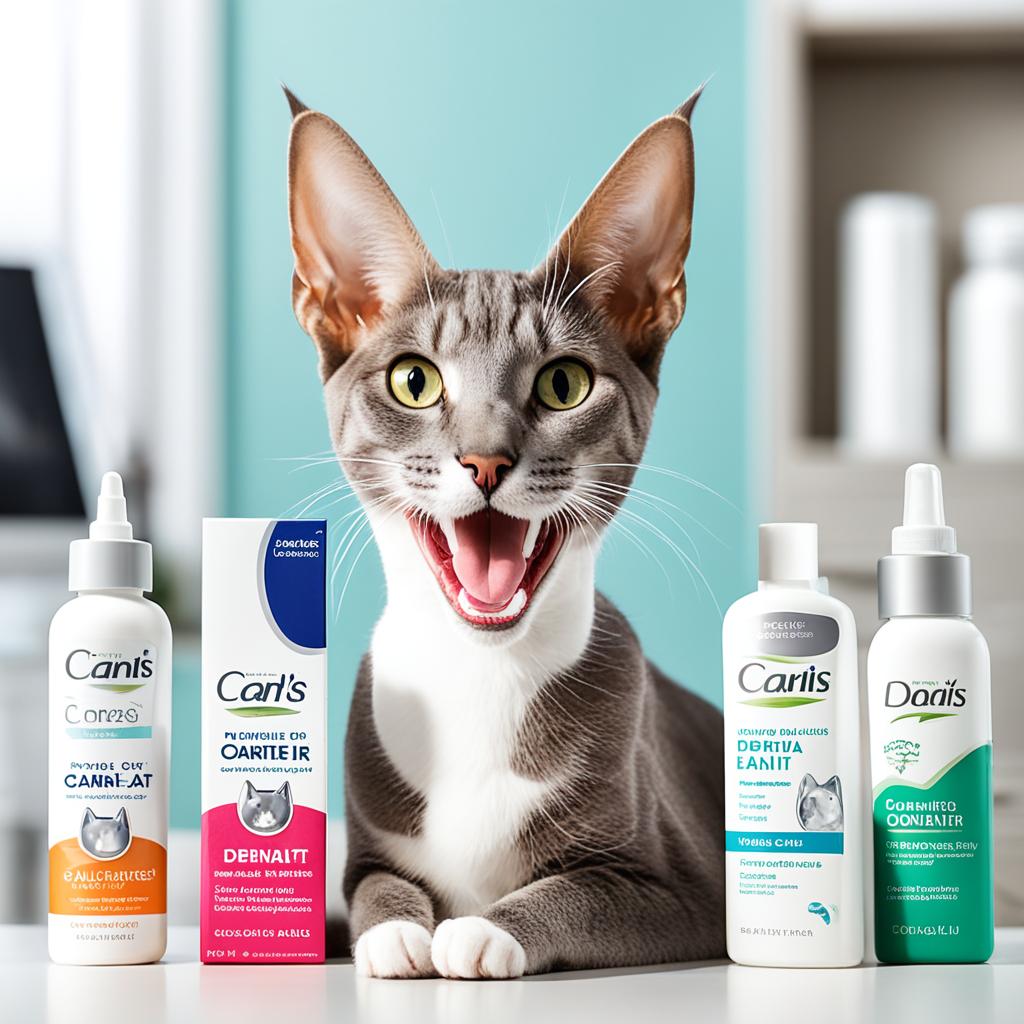
Your Oriental Shorthair’s dental care can be significantly improved with the right products. Investing in the best tools and snacks ensures that your feline friend maintains optimal dental hygiene. Let’s explore some top recommendations:
Recommended Toothbrushes and Toothpaste
Choosing the right toothbrush and toothpaste is crucial for maintaining dental hygiene for Oriental Shorthair Cats. Cat-specific toothbrushes, usually with softer bristles, are designed to be gentle on gums and effective at cleaning teeth. Pair these with enzymatic toothpaste made for cats, which helps break down plaque buildup without being harmful if swallowed.
- CET Enzymatic Toothpaste – It’s flavored to appeal to cats, which can make the brushing process smoother.
- H&H Pets Cat Toothbrush – Featuring an angled head and soft bristles for efficient cleaning without causing discomfort.
Dental Treats and Chews
Dental treats and chews are a flavorful and effective way to promote Oriental Shorthair Cat dental care. These products are specially designed to reduce plaque and tartar as your cat chews, enhancing dental hygiene for Oriental Shorthair Cats. Incorporate them as a complementary measure to regular brushing.
- Greenies Dental Treats – Popular and effective at reducing tartar buildup, plus they’re available in a variety of flavors.
- Blue Buffalo Dental Bones – Not only tasty but also tailored to improve dental health with every bite.
Why Regular Dental Checkups Are Essential
Ensuring your Oriental Shorthair cat’s dental health isn’t just about avoiding the dreaded ‘cat breath’—it’s about maintaining overall health and well-being. Regular dental checkups play a crucial role in identifying and managing dental issues in Oriental Shorthair Cats. Without these routine visits, minor dental issues can develop into more serious conditions, impacting your cat’s quality of life.
During a checkup, your veterinarian can thoroughly inspect your cat’s teeth and gums, looking for early signs of dental issues in Oriental Shorthair Cats, such as plaque buildup, gingivitis, or periodontal disease. Catching these problems early can prevent painful and costly complications down the line. Your vet might also suggest additional Oriental Shorthair Cat teeth cleaning options, which can significantly reduce plaque and tartar formation.
Besides professional cleaning, regular visits are an excellent opportunity for your vet to provide personalized advice on maintaining your cat’s oral hygiene at home. Whether it’s recommending the best dental chews or tailoring a diet to promote dental health, these checkups ensure that your furry companion is well cared for. So, mark your calendar and ensure your Oriental Shorthair gets its regular dental checkup—because a healthy mouth means a happy cat!




